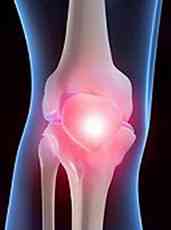Take a minute before you read my blog to watch this movie clip with Ben Stiller where he is told he has arthritis by a doctor and sort of freaks out (because he doesn’t think he’s old enough).
It may be shocking to most that arthritis is much more complicated than just having pain in you joint(s). There are at least 100 types of arthritis with Osteoarthritis being the most common. In fact, the word arthritis actually means joint-inflammation. When we have inflammation in the joints, pressure builds up and pushes down on the nerves in the joint and causes us to feel pain. Check out some of the statistics that most people are not aware of:
- Arthritis is the leading cause of disability in the United States.
- More than half of those with arthritis are under the age of 65.
- Beside artificial joint replacement there is no medical treatment to cure arthritis.
- Approximately 350 million people worldwide have arthritis.
- Arthritis affects more than 52 million Americans and by the year 2040, researchers suspect that number will spike to 78 million.
- Sixty percent of Americans with arthritis are women.
- Low vitamin D levels are associated increased susceptibility to rheumatoid arthritis and other forms of arthritis.
- Blacks, Hispanics, Asians and other minorities populations in the U.S. have lower rates of arthritis compared to white population. However, they experience greater severity of pain and more work and daily activity limitations than whites.
- A new study discovered fish get arthritis, which could fast track therapeutic research in preventing and treating the painful joint disorder. http://www.business-standard.com/article/pti-stories/fish-can-getarthritis-too-study-116071700459_1.html
Arthritis comes in different forms and affects people in different ways. Regardless of the form of arthritis you have the bottom line is that you all have the same basic symptoms: Pain, stiffness, decreased range of motion and swelling. For some of us, it happens randomly (for me it is in the morning or after sitting for a long period of time) or constantly. Severe arthritis can result in chronic pain which results in decreased ability to do “normal activities. Arthritis can cause permanent joint changes.
There are different types of arthritis, which include degenerative and inflammatory. Degenerative arthritis is best represented by Osteoarthritis in which the soft/spongy connective tissue wears away and bone ends up rubbing against bone. This process triggers swelling and eventually pain. Eventually a person will lose strength in that area of the body too. Degenerative arthritis is more common for those who are overweight, previous injury, family history or are older. In most cases, avoiding injury and repetitive movements as well as staying active and maintaining a healthy weight can prevent this type of arthritis.
On the other hand, an issue with the immune system often causes inflammatory arthritis. The most common forms of this type of arthritis are rheumatoid and psoriatic. In this type of arthritis, the immune system mistakenly attacks the joints with uncontrolled inflammation. This reaction causes many different reactions in the body including: Joint erosion and damage to many other parts of the body.
With autoimmune and inflammatory types of arthritis, early diagnosis and aggressive treatment is critical. Slowing disease activity can help minimize or even prevent permanent joint damage
For most with this condition, modern medicine offers a tourniquet of relief that is often accompanied by other symptoms and side effects. This tourniquet approach and side effects of medications often leads people looking for the natural alternative.
In order to better help Arthritis sufferers we need to understand the root causes and symptoms of the disease so we can make sure we are addressing the specific needs of this patient group.
Root Causes:
- Injury
- Joint overuse
- Hereditary
- Obesity or just being overweight
- Poor nutrition
- Other diseases
Of these root causes, the last two are often overlooked and should be the first to be addressed.
Common symptoms:
- Joint aching and soreness
- Stiffness after periods of immobility
- Joint swelling
- Pain after “over-use”
- Bony protrusions (mostly on the joints in the fingers)
If we take these two lists and then take a look at what is available in natural medicine, we can easily put together creative formulas and approaches. Focusing on just pain and inflammation is usually how most address this painful condition, but will not decrease or even treat the underlying cause. Until both areas (cause and symptom) are addressed, OA sufferers will never get the relief they are truly seeking.
Below you will find my approach to helping people with arthritis;
- Addressing the root cause: For most this may require some diagnostics from a modern medicine practitioner. Whether the root cause is an injury, poor nutrition, weight struggles, joint overuse, etc., we need spend as much time here as in the area of symptom relief. How? Here are some examples:
- Poor nutrition- Educate people that processed and refined foods lead to mineral deposits in the joints. Or a diet high in greens will help prevent these mineral deposits from even occurring.
- Weight problems- Educate how to have a better diet and activity (lifestyle changes) while perhaps using supplements to help promote weight loss. (Phase 2 for starch abuses or Tonalin to help with fat metabolism).
- Injury- Adding in supplements that can help with connective tissue integrity and formation like HA or glucosamine sulfate which in turn will speed the healing process. Regardless of the root cause, there should be something available in natural medicine to help address the area in need.
- Addressing the symptoms: this is the area that makes most sense and can help sufferers in the short run while the supplements addressing the root cause can begin to work. Taking a look at the most common symptoms above, here are my suggestions for addressing them effectively:
- Joint aching/soreness/Joint swelling- Turmeric (Meriva) has great anti-inflammatory and antioxidant as well as some underlying immune support benefits.
- Stiffness after periods of immobility/pain after overuse- The supplements mentioned above could be used here too, but I would rather see people use ingredients like Celadrin. Celadrin is a special blend of esterified fatty acids that works in 2 unique ways: Orally and topically. Orally, Celadrin helps in the fight against inflammation along with helping to rehydrate the cells and promote flexibility and decrease stiffness. Topically, it works within 20 minutes to help not only with joint discomfort, but even works with sore muscles.
Additionally, there are some other supplements that have ancient uses that provide benefits in today’s world. Boswellia is one that comes to mind especially for those with the immune component of arthritis mentioned above. Boswellia is believed to work by blocking leukotrienes (immune cells), which are substances that can attack healthy joints. Another oldie but goodie is Cat’s Claw. Cat’s claw like boswellia has a powerful impact on inflammation and on the immune system. A study in the Journal of Rheumatology showed a reduction in pain and inflammation in half of the patients with rheumatoid arthritis. And last but not least one of my favorite herbs to season with- Ginger. Ginger root whether in tea, powdered or fresh has shown to help the body in its fight against inflammation.
For best results, I suggest using a combination of supplements to address your joint inflammation and pain needs. Personally, I use turmeric and Celadrin on a daily basis. For those moments when the pain is more unbearable, I will also apply Celadrin topically. Whatever approach you take, combining supplements from each area will help you achieve the relief you are seeking.


